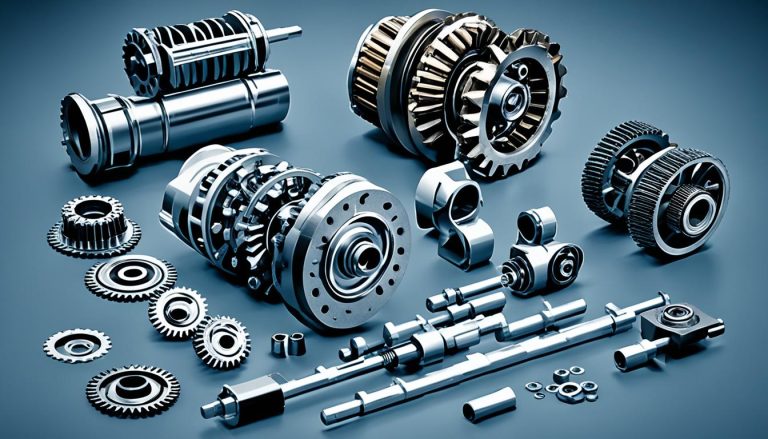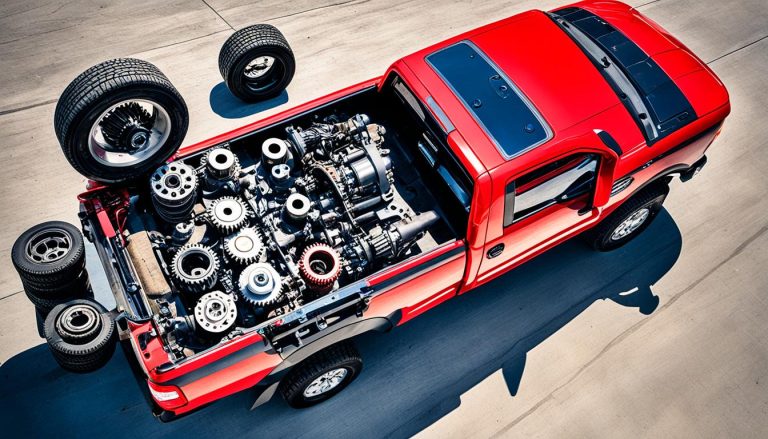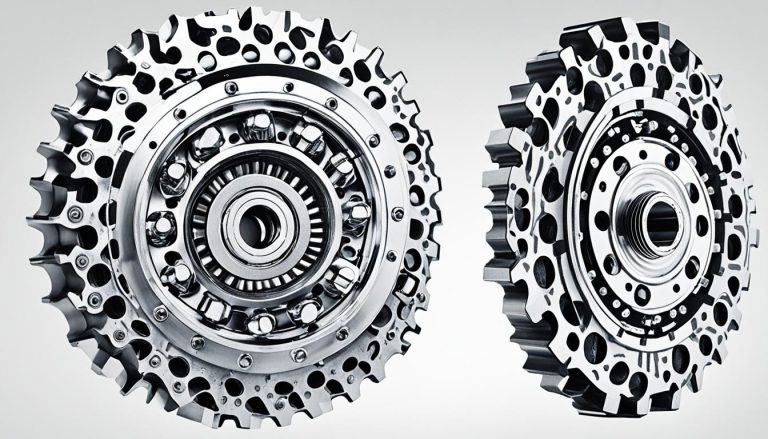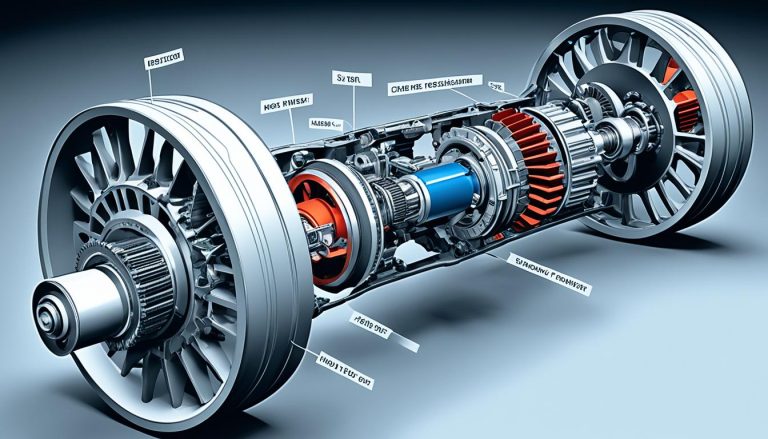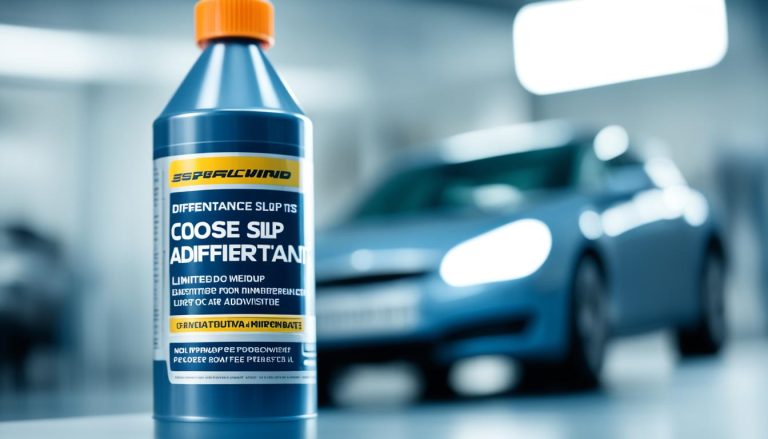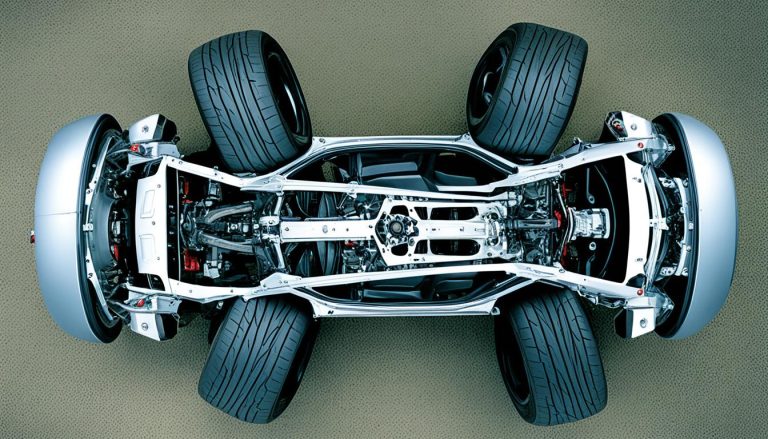Ford F350 Limited Slip Differential Issues
When you’re behind the wheel of your Ford F350, you expect robust performance and unyielding traction, especially when the going gets tough. However, you might have come across Ford F350 Limited Slip Differential Issues that leave you questioning the reliability of your truck. The heart of the matter often lies within the differential— a critical component designed to distribute power to your wheels. Despite this, common problems with f350 limited slip differential can manifest as a disappointing loss of grip akin to an open differential’s performance when faced with diverse terrains.
It’s not uncommon for owners like yourself to experience an f350 limited slip differential failure, where one expects the system to shine. Fortunately, steps can be taken to mitigate these issues, such as introducing a Motorcraft Additive Friction Modifier or adjusting clutch pack shims. These remedies have shown significant improvements in the system’s actual limited-slip capabilities, ensuring that your F350 lives up to its name and your expectations.
Key Takeaways
- Understanding limited-slip differential issues in the Ford F350 is vital for optimal performance.
- Adding a specially-formulated additive can transform the differential’s behavior from insufficient to effective.
- Alterations to clutch pack shims may bolster the limited slip differential’s performance on various surfaces.
- Awareness of f350 limited slip differential failure signs can aid in taking timely corrective measures.
- Regular maintenance and using the correct additives can prevent common problems and extend your differential’s life.
Understanding Your F350 Limited Slip Differential
Getting to grips with the dynamics of your F350’s limited slip differential is fundamental to enhancing your vehicle’s performance, especially under challenging conditions. This vital component’s main objective is to improve traction when you’re traveling over wet, icy, or uneven surfaces by directing power to the wheel with the most grip. Recognizing how it functions, and the upkeep it demands, can be the key to avoiding common issues.
The Role of the Limited Slip Differential in an F350
If you’ve ever wondered about your F350’s ability to maintain poise on tricky terrains, the answer lies within its limited slip differential (LSD). This mechanism is ingeniously designed to distribute engine power to both wheels, even if one is in a low-traction zone. Additionally, it optimizes the power balance between wheels, ensuring a smooth and stable ride.
Factory Specifications and the Design of F350 Differentials
Ford’s factory specifications recommend using the Motorcraft Additive Friction Modifier, complying with Ford Specification EST-M2C118-A, for the well-being of your differential. This blend works wonders to mitigate noise and enhance the differential’s function, ensuring you enjoy a serene and controlled driving experience. However, it’s important to note that while factory fills and additives are a starting point, they aren’t always the definitive solution for *f350 differential maintenance*, and sometimes intervention is required to ensure your LSD is operating at peak efficiency.
Should you face crunching noises or unusual resistance during turns, it might be time for some *f350 limited slip differential troubleshooting*. Knowing how to assess and maintain your differential isn’t just a skill—it’s a necessity for safeguarding its longevity and performance.
Common Misconceptions about Limited Slip Differentials
One widespread belief is that LSDs are on par with fully locking differentials. This is not the case—limited slip differentials vary in efficiency and do not always distribute power equally to both wheels. Understanding the nuances of your F350’s LSD is crucial in tackling any *f350 limited slip differential issues* that may arise. Whether you’re a professional driver or a leisure user, familiarize yourself with how an LSD works, and you’ll be better equipped to diagnose and address problems swiftly and effectively.
Remember: An informed approach to differential care ensures that your F350 lives up to its name both on and off the road.
Ensuring your F350 differential is in top condition is a blend of knowledge and proactive intervention. From understanding the role and design to demystifying LSD functionalities, taking charge of your vehicle’s differential maintenance can markedly improve your driving experience. So, ready your toolkit; it’s time to ensure your F350’s limited slip differential is in prime working order.
Identifying F350 Limited Slip Differential Problems
If you’re driving a Ford F350, being aware of potential differential issues can save you from unexpected troubles on the road. Beyond regular maintenance, it’s crucial to recognize the signs indicating your F350 limited slip differential might be failing. Keep reading to understand these symptoms and their influence on your driving experience.
Recognizing Symptoms of F350 Differential Issues
One of the hallmark signs of f350 differential issues is an unusual noise coming from the differential, which might sound like whining, howling, or clunking. Another symptom to look out for is when you notice one of your wheels spinning freely without power being transferred to the other, especially when driving on uneven terrain or during turns. This can indicate a f350 limited slip differential failure, where the mechanism intended to distribute power evenly to both wheels isn’t operating as designed.
Impact of Ineffective Differential Performance on Driving
An ineffective limited slip differential doesn’t just cause discomfort but can also have a substantial impact on your vehicle’s performance. Imagine a scenario where your F350 is stuck with one wheel on ice and the other on asphalt — without a properly functioning limited slip differential, the wheel on ice may spin aimlessly while the wheel on asphalt remains static, leaving you stranded.
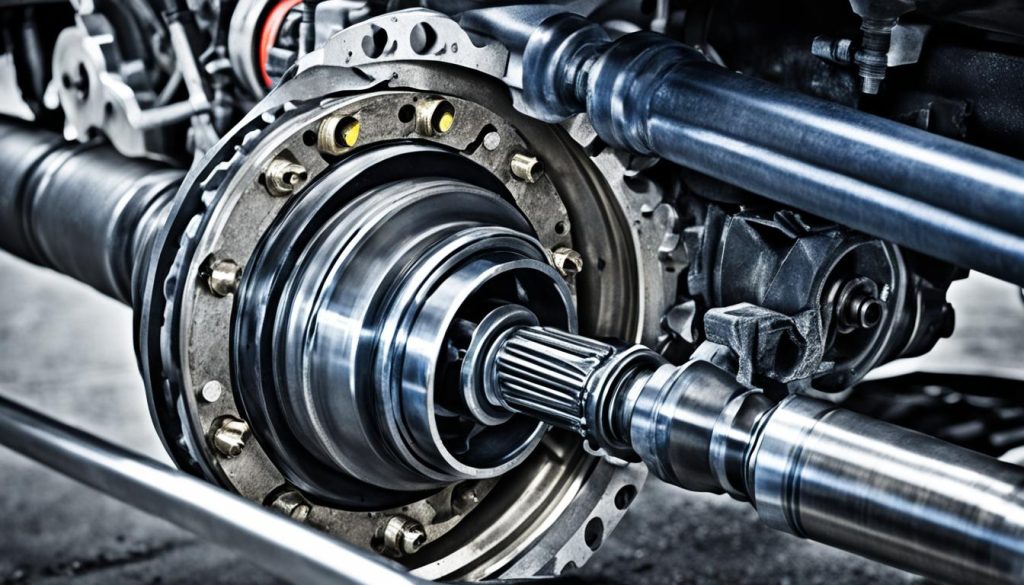
A faulty differential can also affect your truck’s handling, leading to decreased safety and increased tire wear. Below is a table summarizing the typical symptoms and their possible implications:
| Symptom of F350 Differential Issue | Possible Implication on Driving |
|---|---|
| Differential noise (whining/clunking) | Potential wear and tear, indicating the need for immediate inspection |
| One wheel spinning freely | Reduced traction and mobility, particularly in low-traction scenarios |
| Vehicle handling inconsistencies | Increase in tire wear and potential safety hazards |
Identifying these signs early can lead you to take the necessary measures to fix your F350’s differential and prevent further damage. Remember, addressing f350 differential issues proactively can extend the life of your vehicle and ensure a safer, smoother driving experience.
Troubleshooting F350 Limited Slip Differential Issues
F350 differential noise and performance issues can be a real headache for truck owners. But don’t worry, by understanding f350 limited slip differential troubleshooting, you can diagnose and fix the problems yourself. Let’s dive into the steps you need to take to ensure your truck remains in top condition.
Diagnosing the Source of Differential Noise and Malfunctions
Start by closely listening to the sounds coming from your differential during regular drives, particularly when turning corners or driving under load conditions. If you notice peculiar noises such as whining, clunking, or humming, it’s a clear indication that something might be amiss with your F350’s differential. Recording these sounds can help you or a professional assess the severity and type of issue you’re dealing with.

Steps for F350 Limited Slip Differential Maintenance
Your truck’s limited slip differential requires proper lubrication to function effectively. During maintenance checks, ensure that the differential fluid is at the recommended level and that you’re using the right type of lubricant. Some truck enthusiasts report good results with Valvoline products that are formulated for use in LSDs and do not require additional additives.
| Maintenance Task | Importance | Recommended Products |
|---|---|---|
| Checking Fluid Level | Prevents gear wear and overheating | Motorcraft Differential Fluid |
| Adding LSD Additive | Ensures proper clutch engagement | Motorcraft Additive Friction Modifier |
| Tightening Clutch Packs | Improves differential lock performance | N/A – Professional Adjustment Recommended |
| Regular Fluid Changes | Maintains differential cleanliness and functionality | Valvoline SynPower or other high-quality LSD oil |
Remember, if these solutions do not alleviate the f350 differential noise, it may be time to seek f350 differential repair from a professional. Early troubleshooting and maintenance will save you from more extensive repairs down the road and keep your F350 running smoothly.
f350 limited slip differential problems: Resolving the Myths and Realities
As you delve into the world of F350 limited slip differential problems, it’s crucial to separate fact from fiction. Various opinions and experiences can create myths that may steer you away from the real solutions. Let’s debunk some and guide you on how to fix F350 limited slip differential issues.
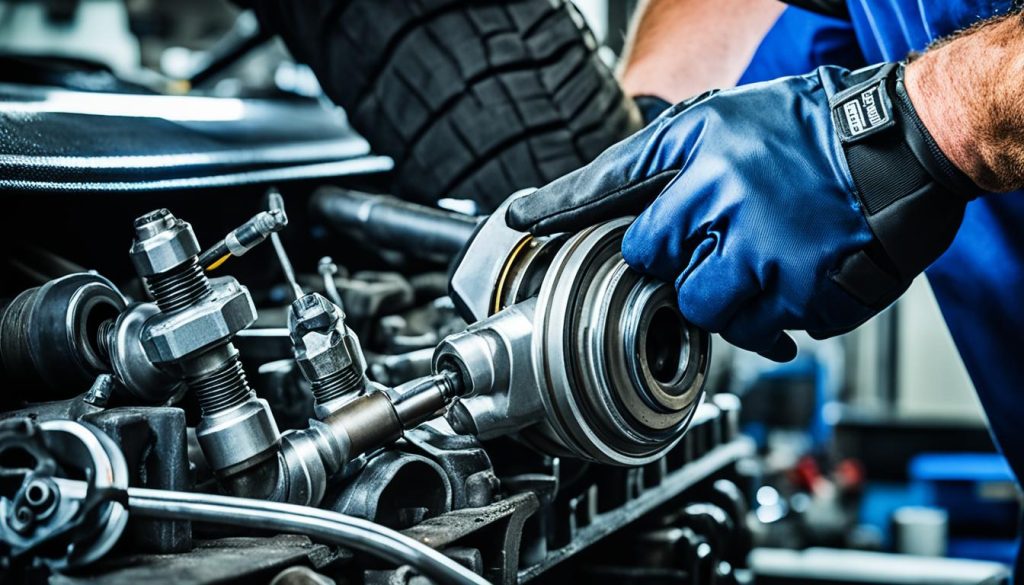
One common misconception is the belief that adding an excessive amount of friction modifier to your differential will only lead to more slipping. This isn’t always true. Indeed, there have been cases where the slipping was actually due to an insufficient amount of friction modifier in the differential fluid. It’s a fine balance, and understanding the specific needs of your F350’s limited slip differential can save you both time and resources.
- Correct Amount of Friction Modifier: Ensures proper engagement of clutches and smooth operation.
- Regular Fluid Changes: Keeps the differential components clean and well-lubricated.
- Inspection of Clutch Packs: Worn clutch packs could be the culprit behind slipping issues.
Owners often ponder whether a larger differential, such as the Dana 80 for dually models, would fare better than the Sterling 10.5″ rear axle found in single rear wheel models, including what oil types each would best operate with. Such considerations highlight the importance of pairing the right components with the right maintenance regime.
| Differential Model | Commonly Faced Issue | Potential Solution |
|---|---|---|
| Dana 80 | Possible overkill for light towing | Assess workload and choose accordingly |
| Sterling 10.5″ | Oil may thin out under heavy loads | Use high-quality, spec-compliant oil |
Understanding your F350’s differential specifications and needs can significantly reduce common problems with the F350 limited slip differential. Sometimes, the solution may require you to roll up your sleeves for clutch pack adjustments, or in more severe cases, a complete rebuild. However, getting acquainted with your vehicle’s mechanics can pave the way to tackling these issues head-on, with confidence and knowledge.
Preventative Measures and Regular Maintenance
Maintaining the health of your F350’s differential is essential for sustained vehicle performance and longevity. Consider these preventative measures as your go-to guide for keeping your F350 running smoothly. Regular maintenance is not just about keeping your truck in top shape; it’s crucial for avoiding the inconvenience and expenses associated with f350 differential replacement.
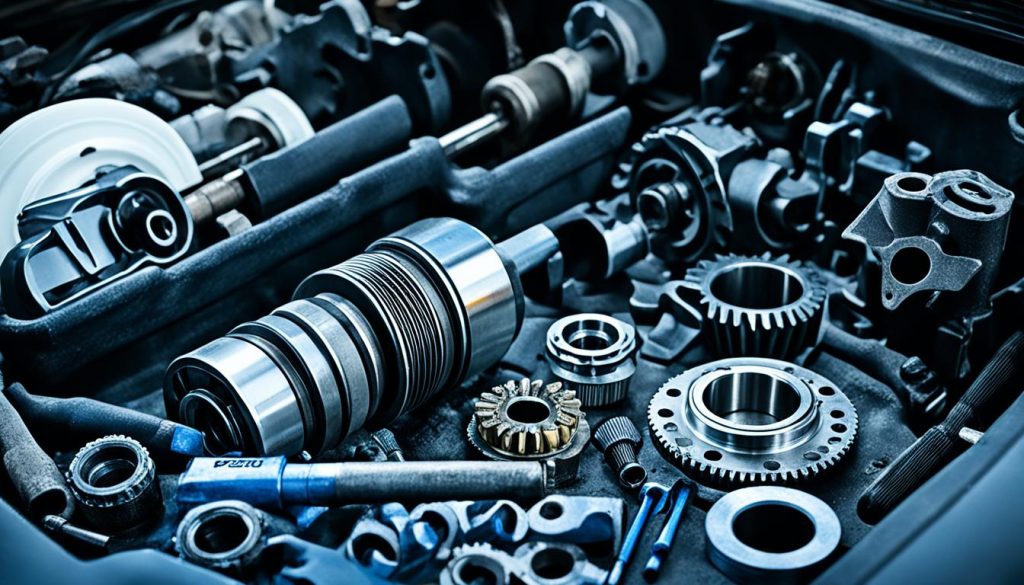
How to Maintain Your F350 Differential for Longevity
Your Ford F350 is a robust machine, designed to haul and perform in tough conditions. However, it can only continue to serve you well with proper care. F350 differential maintenance is a critical aspect of that care. Start with routinely checking and changing your differential fluid according to the manufacturer’s recommendations. Using the right synthetic oil, such as 75w140 for specific models, can significantly improve the differential’s life.
Furthermore, adjust the level of your friction modifier with precision. Not enough may lead to a differential that slips, while too much can cause it to become too tight. Even slight increments can make a significant difference, so handle this task with care.
The Importance of Using the Correct Lubricants and Additives
Using the correct lubricants and additives is not a suggestion—it is a must. These fluids are specially formulated to protect your differential under the stress of heavy loads and continuous use. Make sure the products you use meet or exceed the standards set by Ford for your specific F350 model.
| Maintenance Task | Frequency | Notes |
|---|---|---|
| Check Differential Fluid Level | Regularly | Ensure it’s filled to the proper level with the right specification oil. |
| Change Differential Fluid | As per manufacturer’s recommendation or sooner if under heavy use | Use synthetic oil like 75w140 for certain F350 models without substitutes. |
| Add Friction Modifier | With every fluid change or as necessary | Adjust according to performance; too much or too little can affect differential operation. |
| Inspect Clutch Pack Wear | At every service interval | Look for early signs of wear and replace to prevent slipping or noise. |
By adhering to these recommendations, your F350 differential should remain in top condition, preventing premature wear and ensuring you’re never left stranded due to unexpected differential failure. Don’t overlook these essential maintenance tasks; your truck depends on them.
When to Seek Professional F350 Differential Repair or Replacement
It’s critical to know when your F350’s differential needs more than just a quick fix. If you’re experiencing persistent issues like noise, poor traction, or erratic behavior from your differential, these could be signs of deeper problems. A differential that needs frequent topping up of its lubricating fluid or one that simply doesn’t perform even after the right friction modifiers are added demands professional attention. In these cases, whether the solution is repair or replacement depends largely on the extent of wear or damage and how often these issues occur.
Deciding Between Repairing vs. Replacing Your Differential
Understanding the options available to you is key when faced with differential troubles. A repair might be sufficient if problems are caught early and the overall structure of your differential is uncompromised. However, when wear is too advanced, particularly within the clutch packs or gears, opting for a f350 differential replacement could be a more cost-effective and long-lasting solution. A thorough inspection by automotive professionals will provide the insight needed to make the best choice for your vehicle’s longevity and performance.
How to Choose a Qualified Service Technician for Differential Issues
Finding the right service technician is paramount. You’ll want a professional who possesses not only a deep understanding of F350 differentials but also a track record of resolving both common and complex f350 differential repair issues. Look for technicians who specialize in Ford trucks and who continually update their knowledge and skills to cater to the latest models and techniques. Trust in a technician’s expertise will not only ensure that your differential is in capable hands, but it will also provide you peace of mind that your truck will return to the road performing better than ever.
FAQ
What are common Ford F350 Limited Slip Differential Issues?
Common problems include poor performance where the limited-slip does not function effectively, leading to one wheel spinning without power being transferred to the other. Differential noise and failure to engage properly are also common issues.
What role does the Limited Slip Differential play in an F350?
The limited slip differential in an F350 is designed to distribute power to both wheels, even when one has lost grip, which is crucial for maintaining traction on low-traction surfaces such as ice, mud, or loose gravel.
What are the factory specifications for F350 differentials?
Factory specifications state the use of a specific additive, Motorcraft Additive Friction Modifier meeting Ford Specification EST-M2C118-A, to reduce noise and enhance the differential’s function.
Are there common misconceptions about Limited Slip Differentials in F350 trucks?
Yes, a common misconception is that limited-slip differentials are equivalent to lockers and will always transfer power equally. However, LSD efficiency can vary and they may not always perform optimally without proper maintenance and troubleshooting.
How do I recognize symptoms of F350 differential issues?
Symptoms include differential noise, vibration, and one wheel spinning while the other remains static, especially on uneven traction surfaces. It indicates that the limited slip differential may not be engaging as it should.
What impact does ineffective differential performance have on driving?
An ineffective differential could lead to reduced traction, making it difficult to drive in conditions where grip varies between wheels, such as one wheel being on a slippery surface while the other is not. This can affect vehicle stability and safety.
How do I troubleshoot F350 limited-slip differential noise and malfunctions?
Troubleshooting begins with checking the differential fluid level and type. Adding the right friction modifier, per Ford’s recommendation, can often resolve noise and improve performance. If issues persist, inspect the clutch pack shims and the overall health of the differential.
What maintenance steps can I take for my F350’s limited slip differential?
Regular maintenance includes changing the differential fluid with the correct synthetic oil and additives, checking and adjusting the clutch packs if necessary, and inspecting for wear on the clutch material.
How can I resolve myths and realities about F350 limited slip differential problems?
By understanding that some issues require simple fixes like the right additive or fluid changes, while others may need more extensive work such as clutch pack adjustments or a differential rebuild. It’s also important to use the proper type of fluid and additive specific to your model.
How can I maintain my F350 differential for longevity?
Maintain your F350’s differential by following a regular maintenance schedule, using the correct synthetic oil, and ensuring you have the correct amount of prescribed additives to prevent premature wear and performance issues.
Why is it important to use the correct lubricants and additives in my F350 differential?
Using the correct lubricants and additives ensures that your differential operates smoothly, minimizes wear and tear on its components, and prevents common issues such as noise, slipping, and failure to engage properly.
How do I decide between repairing vs. replacing my F350 differential?
The decision to repair or replace your differential depends on the severity of the issues it’s facing. Minor problems often require simple maintenance, while significant wear may necessitate a rebuild or replacement of the differential.
How do I choose a qualified service technician for my F350 differential issues?
When seeking professional repair, look for a qualified technician with experience specifically with the F350 differential type you have. They should have a good track record and expertise in either Dana or Sterling rear axles, depending on your model.

